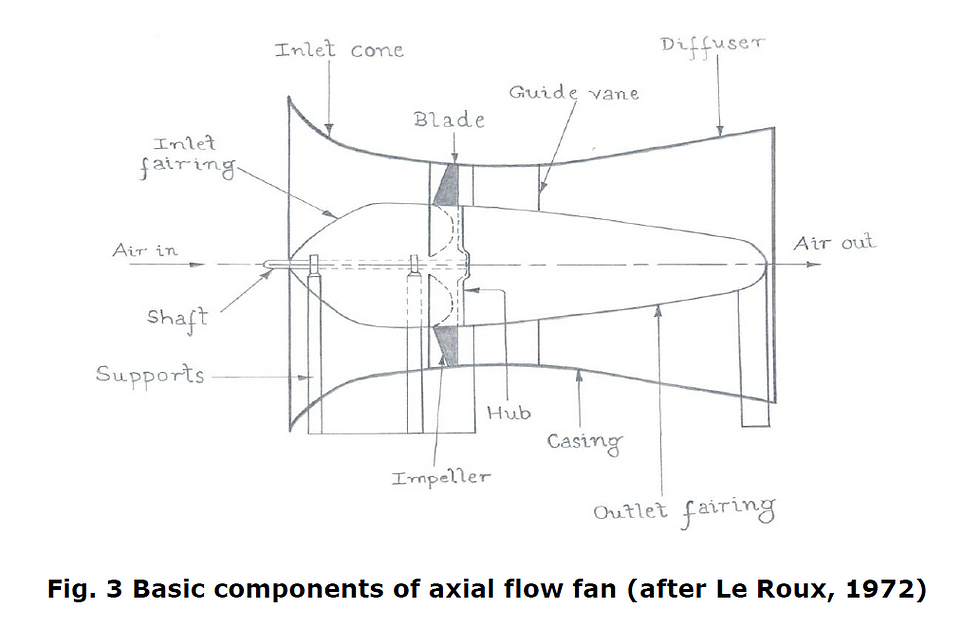MINE FAN - AXIAL FLOW FAN
- Raghav Prasad Dubey

- Apr 9, 2021
- 2 min read
AXIAL FLOW FAN
It consists of a shaft with a hub (Boss). A number of blades are attached to the hub. The salient constructional features of axial flow fan is shown in Fig. 3.

In case of axial flow fan, the flow of air is parallel to the shaft or axis. That’s why its name has come as axial flow fan. In case of axial flow fan, the air is given a twist because of which the air leaves the impeller with a spiral motion. To remove this spiral motion of air, and also to improve fan efficiency, a set of stationary blades is installed on either the inlet or outlet of the impeller. We call these fixed blades as inlet or outlet guide vanes. Sometimes it is observed that we have two or three impellers in a fan, one behind the other. Each of these impellers have their own set of guide vanes. We call such fans as two stage and three stage fans respectively. Sometimes, we have two impellers, driven by separate motors and they are made to revolve in opposite direction. In such cases, guide vanes are not required. We call such fans as “contra-rotating fans”.
Axial flow fans are also provided with casings. However, this is not the case with small fans used in rooms. The casing has three sections:
- A cylindrical section round the impeller
- An inlet section provided with a bell type of mouth or cone type to reduce the entrance losses
- A diverging outlet section or diffuser or evasee to reduce shock losses by allowing the air to slow down gradually
For improving the efficiency of the fan so that the flow of air is smooth through it, the axial flow fan is provided with a short snub-nosed inlet fairing towards the inlet side and a long pointed outlet fairing towards the outlet side of the fan.






Comments